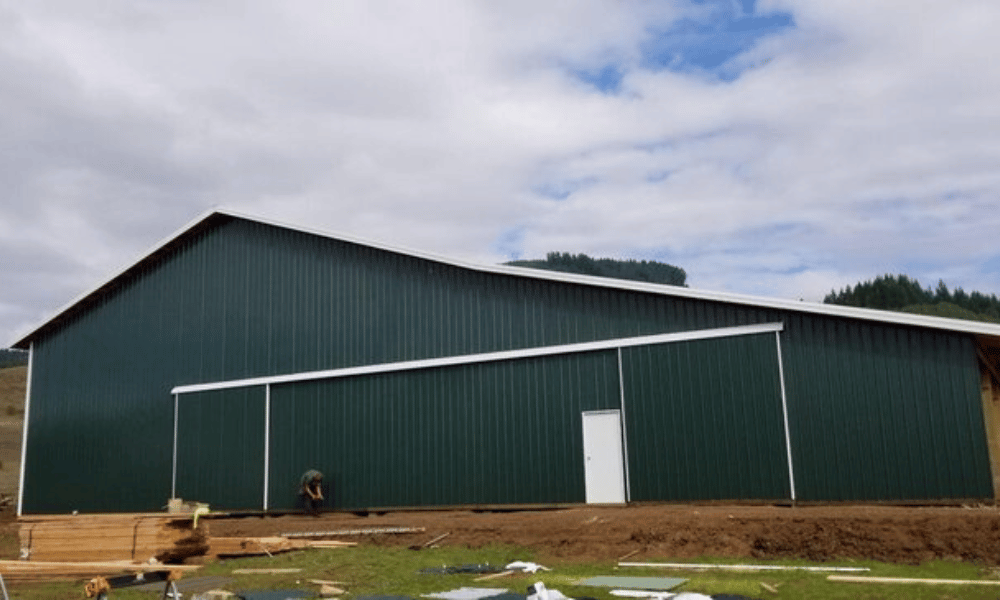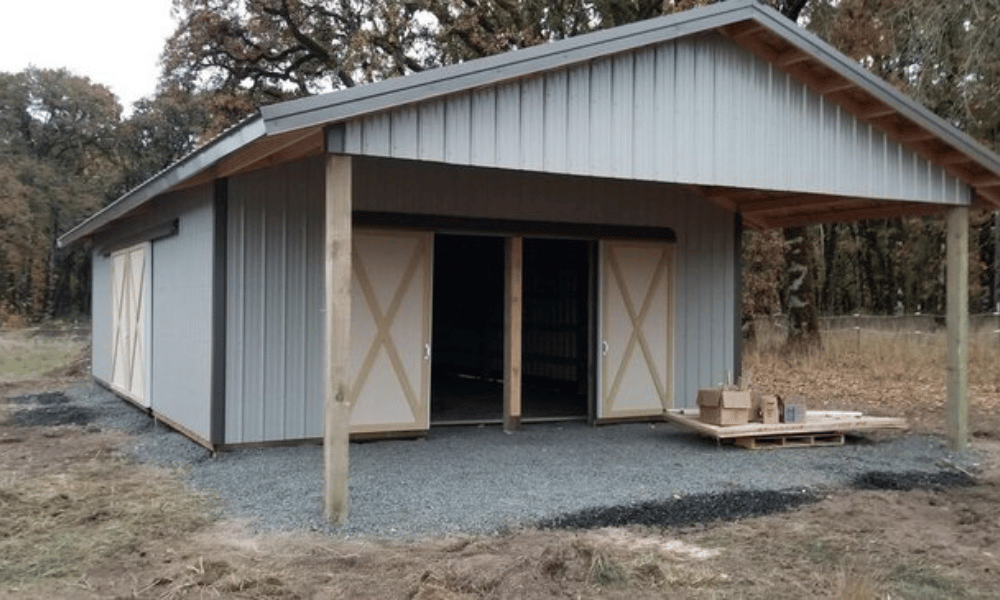Introduction: Setting the Scene for Space and Functionality
When it comes to storing vehicles or creating a functional workspace, the age-old debate of pole buildings versus traditional garages often arises. Each option presents its unique advantages, so how do you choose the one that best fits your needs? In this adventurous exploration of “Space and Functionality: Pole Buildings vs Traditional Garages,” we’ll delve deeply into the characteristics of both structures, their versatility, costs, and much more. Buckle up as we navigate through this exciting territory!
What are Pole Buildings? Understanding the Basics
Defining Pole Buildings
Pole buildings, also known as post-frame buildings, are structures supported by poles driven into the ground. This design is not only cost-effective but also offers significant flexibility in terms of space and layout.
The Structure of Pole Buildings
The fundamental elements of a pole building include:

- Posts: The vertical supports that bear the load. Girts: Horizontal members that connect to the posts. Roofing and Siding: Materials that can be customized according to preference.
Why Choose Pole Buildings?
Many people opt for pole buildings due to their spacious interiors. With no interior load-bearing walls, they can be designed with vast open spaces—ideal for workshops or storage.
Traditional Garages: A Closer Look
Understanding Traditional Garages
Traditional garages are typically constructed using standard framing techniques with concrete foundations and walls. They are generally smaller than pole buildings and come with specific designs based on regional building codes.
Components of Traditional Garages
Some key components include:
- Concrete Foundation: A stable base for durability. Framed Walls: Load-bearing walls that restrict interior space. Roof Type: Various roofing styles such as gable or flat.
Advantages of Traditional Garages
While traditional garages may lack the expansive feel of pole buildings, they offer several benefits:
- Better insulation options Enhanced security features More aesthetically pleasing designs for residential areas
Comparing Space: Pole Buildings vs Traditional Garages
Interior Layouts: Flexibility in Design
One standout feature is how each structure accommodates various activities.
Pole Building Flexibility
With their wide-open layouts, pole buildings can easily be reconfigured based on changing needs—be it parking multiple vehicles or setting up a workshop.
Traditional Garage Limitations
Contrary to pole structures, traditional garages have limited layouts due to their load-bearing walls. This can hinder functionality if users want an expansive workspace.
Functionality Matters: What Can You Do?
Space Utilization in Pole Buildings
In terms of utility, pole buildings shine brightly! Homeowners can utilize their spacious interiors for numerous purposes:
Vehicle Storage Workshops Recreational Spaces Livestock SheltersVersatility at Its Best
Imagine turning your pole building into a mini gym or a cozy man cave! The possibilities are endless!

Functionality in Traditional Garages
On the flip side, traditional garages often serve as mere parking spaces or storage units for tools and household items. While they can be organized efficiently, their inherent limitations restrict multi-functional use.
Cost Comparison: Investing in Your Future Space
Initial Investment: Understanding Upfront Costs
When considering “Space and Functionality: Pole Buildings vs Traditional Garages,” cost plays a pivotal role in decision-making.
Pole Building Expenses
The initial costs for constructing a pole building tend to be lower due to fewer materials required and simpler construction methods.
| Expense Category | Estimated Cost | |----------------------|----------------| | Materials | $15 - $30/sq ft| | Labor | $5 - $10/sq ft | | Total (Approx.) | $20 - $40/sq ft|
Traditional Garage Costs
In contrast, constructing a traditional garage incurs higher costs because of additional materials like concrete foundations and framed walls.
| Expense Category | Estimated Cost | |----------------------|----------------| | Materials | $25 - $50/sq ft| | Labor | $10 - $20/sq ft| | Total (Approx.) | $35 - $70/sq ft|
Long-Term Value: Which Lasts Longer?
Durability of Pole Buildings vs Traditional Garages
Both structures have different lifespans based on materials used and maintenance practices.
Longevity of Pole Structures
With proper care, pole buildings can last anywhere from 30 to 50 years or more! Their wooden frames resist damage when maintained correctly.
Traditional Garage Lifespan
On average, http://waylontbdy553.bearsfanteamshop.com/the-complete-list-top-10-advantages-of-building-a-durable-pole-barn traditional garages may last between 20 to 30 years depending on environmental factors and upkeep.
Aesthetic Appeal: Looks Matter!
Design Choices in Pole Buildings
When discussing “Space and Functionality: Pole Buildings vs Traditional Garages,” aesthetics come into play too!
Customization Options
Pole buildings offer vast customization—from colors to materials—allowing homeowners creative freedom when designing their space.
Traditional Garage Aesthetics
While traditional garages may not offer as much flexibility in design as pole structures do, they blend well within residential neighborhoods due to standardized appearances.
Environmental Considerations: Eco-Friendly Choices?
Eco-Friendliness of Pole Buildings
Pole buildings typically have less environmental impact due to sustainable construction practices. They require fewer resources compared to conventional methods!
Materials Used
Often built from renewable resources like wood, they promote sustainability effectively!
Traditional Garage Environmental Impact
In contrast, traditional garages might utilize non-renewable resources leading them down less eco-friendly paths unless specifically designed otherwise.
Building Codes & Regulations: What You Need to Know?
Before diving into construction projects, understanding local zoning laws becomes essential!
Pole Building Regulations
Most regions allow easier permits for constructing pole barns compared with conventional structures making them an attractive option for many property owners!
Traditional Garage Compliance Issues
Building a garage often requires stricter adherence to zoning laws which could delay your project timeline significantly!
Space Efficiency & Storage Solutions
How does each structure stack up when it comes down to maximizing storage potential?
Maximizing Space in Your Pole Building
Using vertical storage solutions allows homeowners ample room without cluttering floorspace while maintaining usability across various functions!
Wall-mounted shelving Overhead racks Modular storage systemsOrganizing Your Traditional Garage
Although limited space exists within traditional garages effective organization strategies help optimize what little area is available!
Pegboards for tools Stackable bins Ceiling-mounted racksMaintenance Requirements Over Time
Keeping your investment looking good will take some effort regardless if you choose either option!
Pole Building Upkeep Tips
Regular inspections check:
Structural integrity Roof conditions Pest management strategiesThese simple actions extend longevity greatly!
Maintaining Your Traditional Garage
Ensure routine cleaning routines keep everything spick-and-span while checking hardware regularly ensures safety standards remain intact throughout ownership tenure too!
Popular Uses for Both Structures
Explore common applications beyond just vehicle storage here!
Innovative Uses For Your New Pole Building
Creative homeowners have transformed these open spaces into:
Craft studios Guest houses Event venuesThe sky's truly the limit!
Challenges Faced with Each Option
Not everything is sunshine; there are hurdles associated with both choices too—let’s dive deeper below!
Challenges Encountered By Owners Of Pole Structures
Weather conditions may affect wood over time leading potential repair expenses later down line unless treated properly beforehand!
Risk from wood rot
2.Reliance on quality craftsmanship during build phase
This makes choosing reputable builders crucial right outta gate!
FAQs About Space And Functionality Between Two Structures
Here are some frequently asked questions regarding our topic today along clear-cut answers!
1) Are there restrictions on where I can place my pole building?
Yes; local zoning laws dictate spacing requirements based upon property lines etc.!
2) Can I insulate my traditional garage effectively?
Absolutely; insulated garage doors alongside wall insulation work wonders improving energy efficiency considerably!
3) Do I need permits before building either type?
Typically yes; always check local regulations beforehand ensure compliance throughout construction journey ahead!
4) How do weather conditions impact these types differently?
Weather affects both types but especially wood-based poles susceptible moisture damage over time necessitating proactive maintenance practices!
5) Is financing available specifically tailored towards these builds?
Many banks provide loans dedicated projects like these fostering growth opportunities within communities nationwide!
6) Can I renovate an existing garage into something similar akin my new desired function instead?
Certainly possible depending structure size/condition; consult professionals evaluate feasibility before jumping headfirst into plans though!
Conclusion: Making the Right Choice Together!
Ultimately deciding between “Space and Functionality: Pole Buildings vs Traditional Garages” boils down personal preference alongside unique requirements suited individual lifestyles—as there’s no one-size-fits-all solution here folks! So whether you prioritize expansive layout flexibility offered by innovative post-frame designs OR prefer classic charm provided through conventional frameworks remember exploring options thoroughly helps pave way toward success ahead! Happy building everyone!!